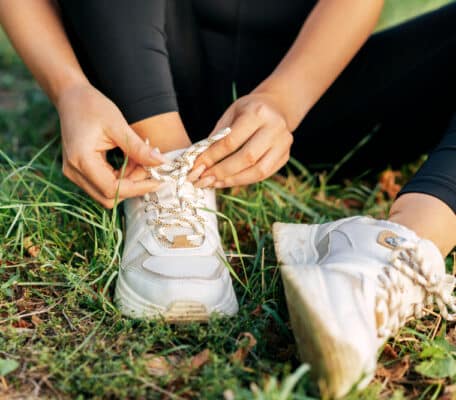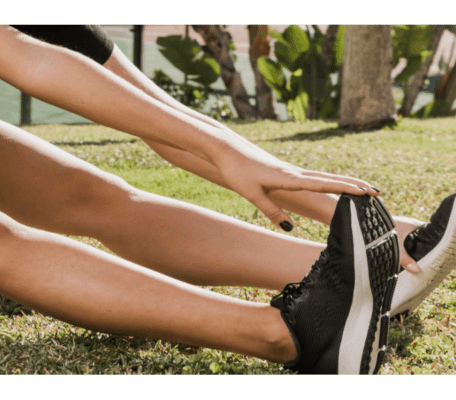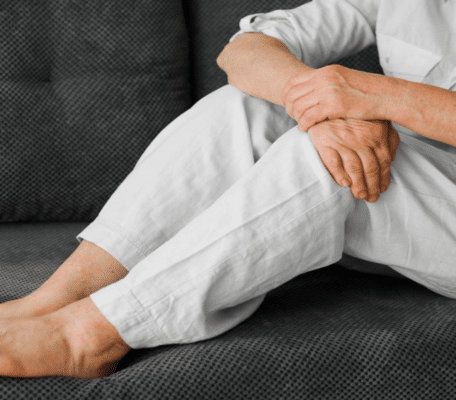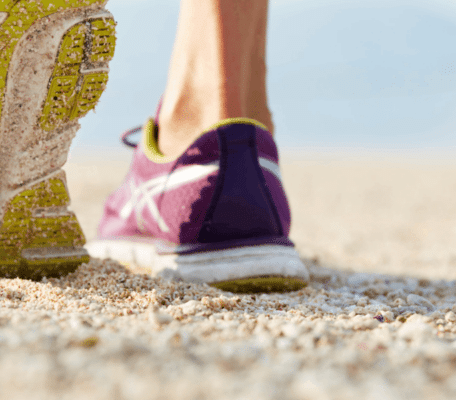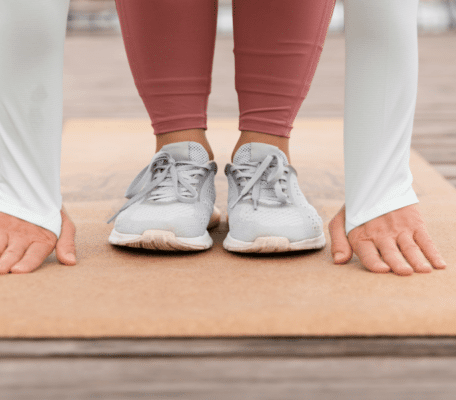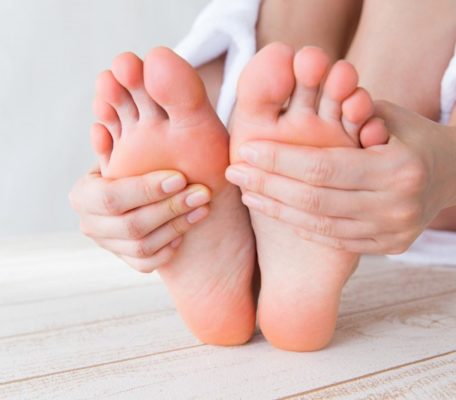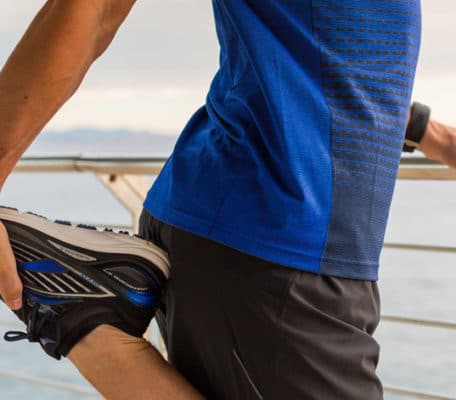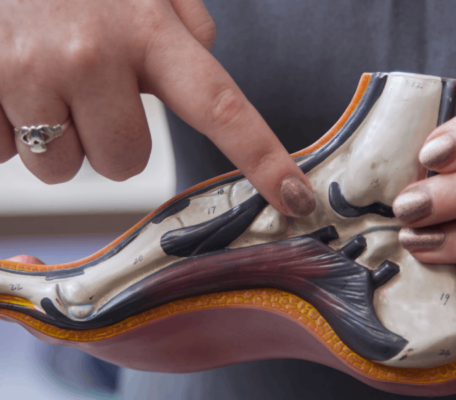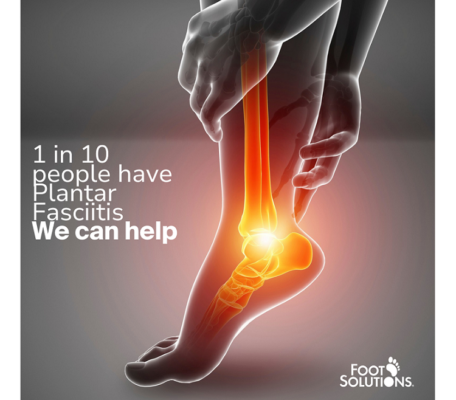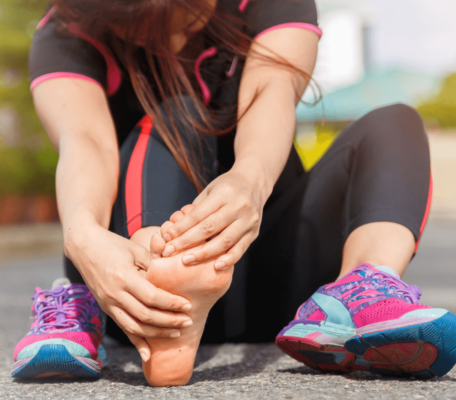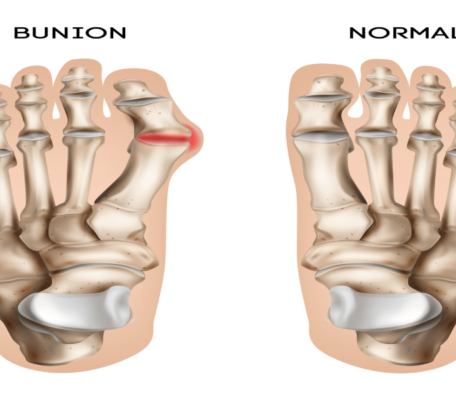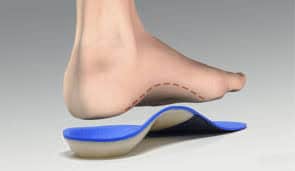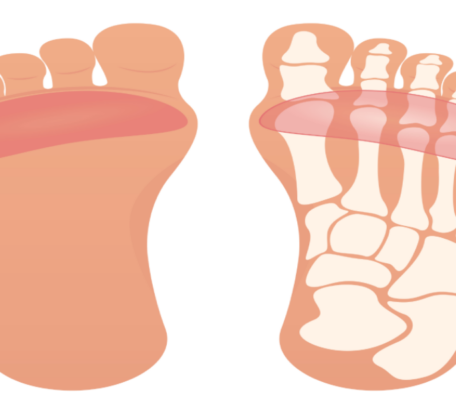Not every runner has knee pain, but it isn’t an uncommon injury for runners, either. Fortunately, knee pain doesn’t have to stop you from running; it is manageable. There are a few different things that can cause you to experience knee pain from running. Read on to learn more about how to get rid of knee pain from running.
What Is Runner’s Knee?
 Runner’s knee is one of the most common injuries experienced by runners. It typically causes pain around the kneecap and, sometimes, behind the kneecap, as well. Runner’s knee may occur when you begin to increase your mileage. The pain tends to be worst when you are walking down stairs or running downhill. After sitting or resting for an extended period, the knee may feel stiff. Flexing the knee may produce a clicking sound. With runner’s knee, the pain may fully return when you begin running again, even after resting it for several days.
Runner’s knee is one of the most common injuries experienced by runners. It typically causes pain around the kneecap and, sometimes, behind the kneecap, as well. Runner’s knee may occur when you begin to increase your mileage. The pain tends to be worst when you are walking down stairs or running downhill. After sitting or resting for an extended period, the knee may feel stiff. Flexing the knee may produce a clicking sound. With runner’s knee, the pain may fully return when you begin running again, even after resting it for several days.
Causes of Runner’s Knee
So how does a person get runner’s knee? Well, your kneecap is held in place by your thigh muscles. There is a small groove in the bone of the thigh that allows the kneecap to slide up and down when you run. Sometimes, the knee can slip out of that groove. This can happen because the thigh muscles aren’t strong enough or because there is an imbalance of strength between the hamstrings and the quadriceps.
Runner’s knee can also be the result of the feet not getting sufficient support. You may be overpronating or supinating – rolling the foot inward or outward too much – when you run.
Caring for Runner’s Knee
There are a few factors that can aggravate runner’s knee. The first aggravating factor is overusing the knee. You may need to just take a break, rest, and allow the knee to heal. Running on hills can also exacerbate the problem. Avoid running on a curved track or a banked road, too. This places your body at an angle, which forces you to overpronate. It creates, in effect, a situation in which one leg is shorter than the other. It is easier on your body to run on a level surface.
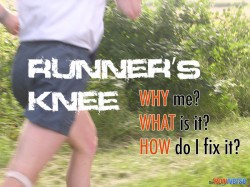 Caring for runner’s knee is pretty simple. Ice the knee immediately after running, whether it hurts just then or not. Taking an anti inflammatory may also help – see your doctor or pharmacist for advice. This will reduce inflammation and keep you comfortable so that you can keep running. You can also use a heating pad on the knee for about 30 minutes before bed to relax the muscles. This alternation of ice and heat is a great remedy for runner’s knee.
Caring for runner’s knee is pretty simple. Ice the knee immediately after running, whether it hurts just then or not. Taking an anti inflammatory may also help – see your doctor or pharmacist for advice. This will reduce inflammation and keep you comfortable so that you can keep running. You can also use a heating pad on the knee for about 30 minutes before bed to relax the muscles. This alternation of ice and heat is a great remedy for runner’s knee.
If you continually have issues with runner’s knee, you should look into the underlying problem. It may be an issue that is simple and easy to fix, like overpronation or supination. Overpronation means that when your foot makes contact with the ground as you run, the majority of your body weight strikes the ground in a way that causes the foot to roll inward, toward the big toe. Supination means the opposite; when you run, your foot rolls outward, with most of your weight landing on the side of the foot near the pinky toe. Fortunately, this can be easily fixed.
You can have a gait assessment performed at a specialized shoe store; this will identify definitively whether you overpronate or supinate. With the knowledge of your gait style, you can select shoes and arch supports (shoe inserts) that help to correct your overpronation or supination.
If you have knee pain from running, visit Foot Solutions. We can perform a gait analysis and help you find shoes & arch supports that will eliminate your knee pain.


